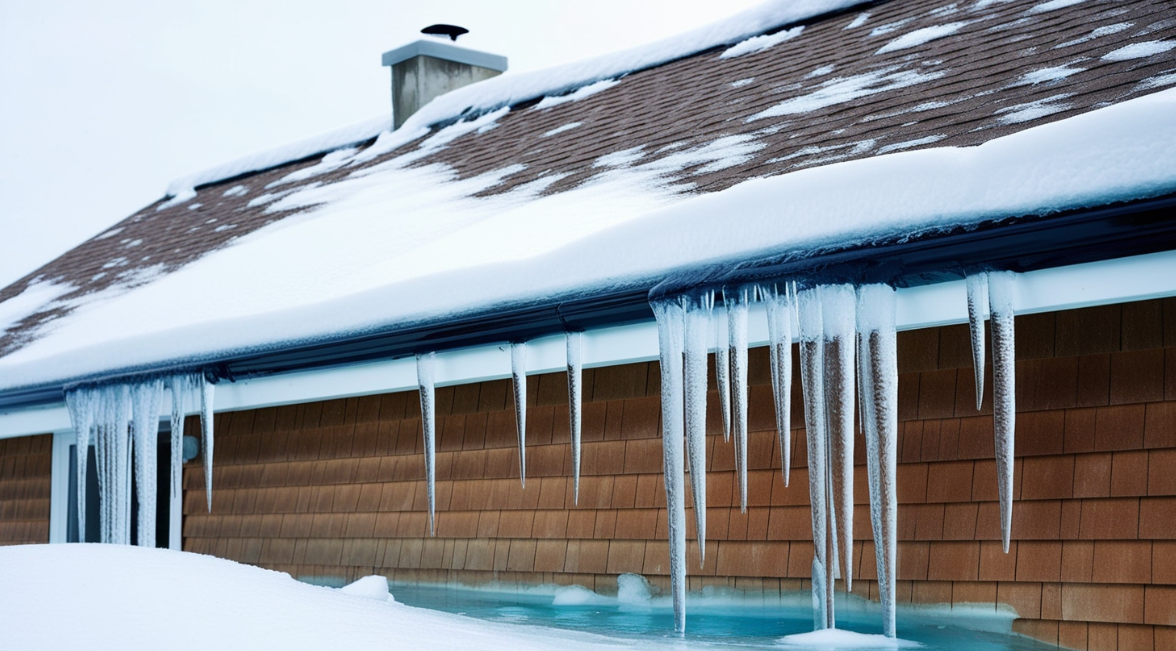What is an Ice Dam?
An ice dam forms when snow piled on a roof melts and runs down, beneath the snow, until it hits air below freezing. Ice then builds up and creates a dam preventing melted snow from draining , so it pools behind the dam. Ice dams can harm your roof causing damage to the structure gutters, ceiling, walls, or insulation.
What Causes Ice Dams?
Ice dams on metal roofs or asphalt shingles roofs happen because of heat from inside the house. Heat goes up into the attic and warms the top of the roof. This melts the snow on it. The melted snow turns to water. This water flows down the surface under the snow blanket. When the water gets to the roof’s edge, it freezes again and makes a dam. We call it a dam because it stops other melted snow from sliding off. If you see icicles hanging from your roof, you have an ice dam.

Factors Contributing to Ice Dams on Metal Roofs
- Insufficient Insulation and Ventilation: When the attic lacks proper insulation or ventilation, it results in uneven roof temperatures. Warm air from inside the home escapes through the roof, melting snow on warmer areas, while colder parts remain frozen. This leads to the formation of ice dams as melted snow refreezes along the colder edges.
- Changing Temperatures: Fluctuations in temperature, such as warming during the day and cooling at night, cause snow to melt and refreeze. This cycle contributes to ice buildup along the roof’s perimeter.
- Blocked Gutters: Gutters clogged with debris can prevent meltwater from draining properly. This trapped water accumulates at the roof’s edge, where it refreezes and leads to the creation of ice dams.
- Roof Configuration: Architectural elements like valleys, dormers, or skylights can create colder zones on the roof, where snow is more likely to refreeze. These areas often contribute to ice dam formation as snowmelt collects and refreezes.
- Repetitive Snow Melting and Freezing: On metal roofs, snow can melt and flow downwards, refreezing in colder areas. This occurs when snow accumulates and repeatedly melts due to both solar heat and heat loss from inside the house.
- Uneven Heat Distribution: Heat escaping from certain areas of the house, like around chimneys or skylights, can create warm spots on the roof. This localized melting causes water to run down and refreeze at cooler edges, forming ice dams.
- Inadequate Roof Pitch: A low roof slope may prevent snow from sliding off efficiently, causing snow buildup. As the snow melts and refreezes, ice dams can form along the roof’s edge. Read more…


